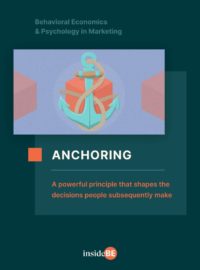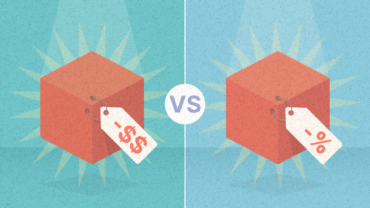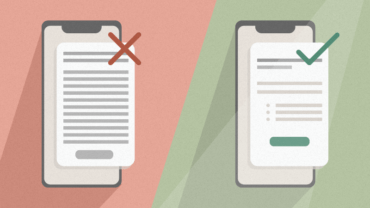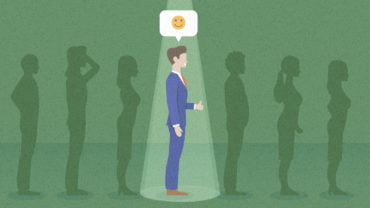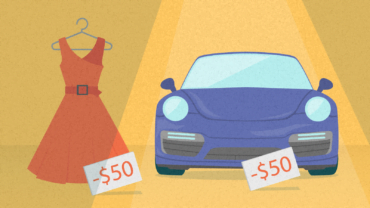Availability Heuristic – Everything You Need to Know
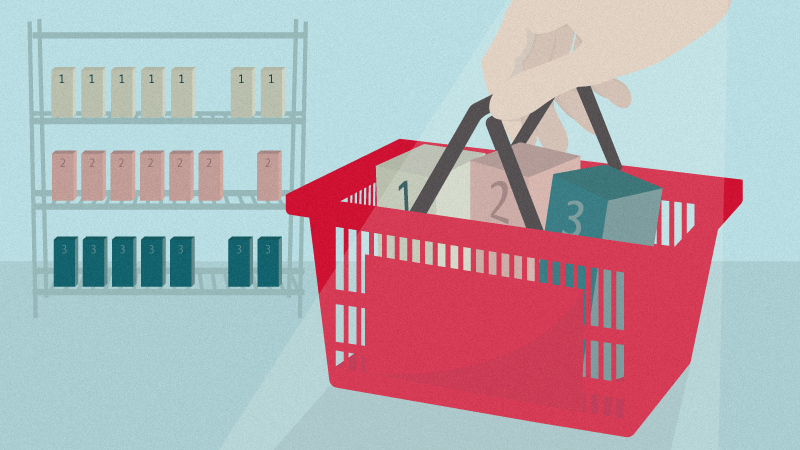
Article content:
Definition of the availability heuristic
The availability heuristic is a mental shortcut. It allows us to make quick and effortless judgments about the probability of a certain event. It relies on easily available examples, information, or our recent experience.
That means that we evaluate an event as more likely to take place if the information about it is more easily brought to mind (i.e., it’s more available). For example, we are more worried that our plane will crash if we have heard about a plane crash recently.
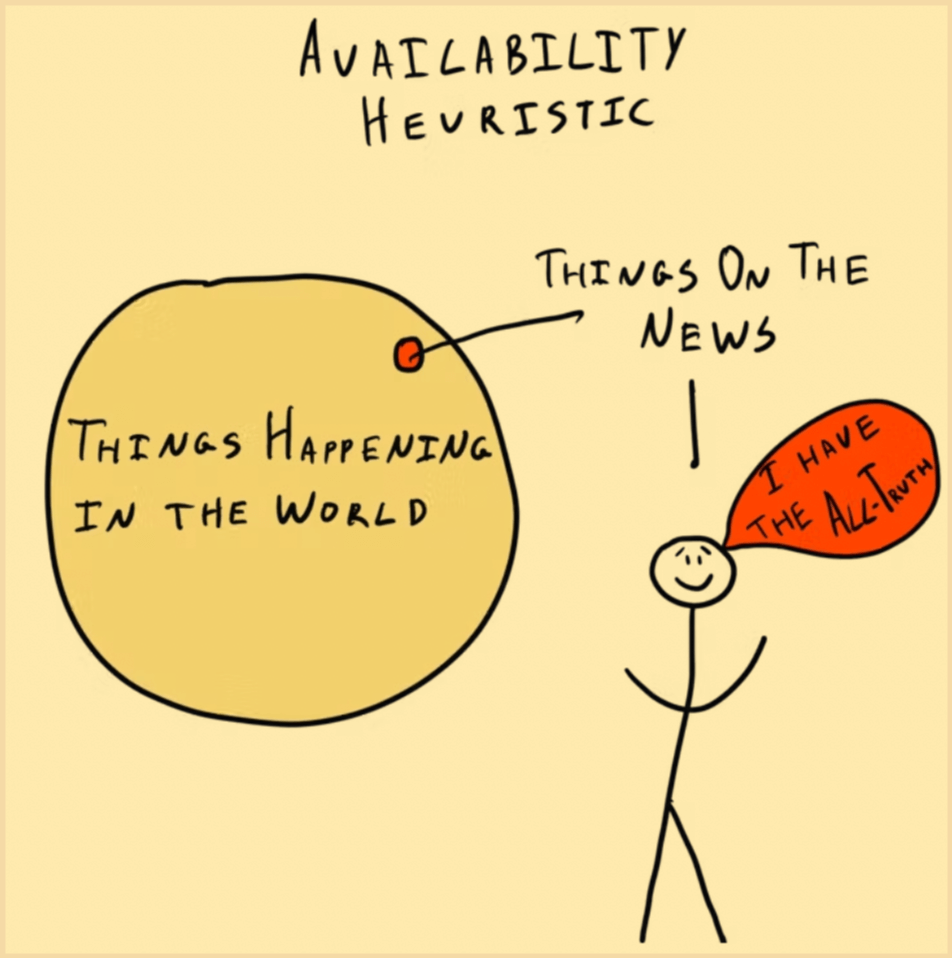
Source: The Decision Lab
How does the availability heuristic work?
Try to make a guess – which job is more dangerous – police officer or fisherman? The first thing that comes to mind when thinking about fishing is perhaps an older man in a checked shirt, sitting calmly in his little boat, enjoying the sounds of nature. Not that dangerous, is it?
We can’t easily remember the last time we heard about some fatal accident or serious injury that happened while fishing. But how about a police officer? Hollywood movies or TV news give you a lot of cues – crowds of policemen in front of a bank waiting to hear the demands of the robber, a crazy car chase, or the Joker blowing police cars up.
The availability heuristic provides you with a quick and (most of the time) pretty sufficient answer without even trying.
The answer seems pretty clear. Police officers must live through far more dangerous situations in their lives than fishermen, right? Wrong! According to the Occupational Safety and Health Administration, fishing is the most dangerous job out there with 132.1 deaths per 100,000 workers.
You couldn’t know that without Googling it first. But that takes time and effort. Instead, the availability heuristic provides you with a quick and (most of the time) pretty sufficient answer without even trying.
The ease with which we retrieve the information doesn’t just depend on the number of times we have heard about police shootings. As Daniel Kahneman points out in his behavioral economics bible Thinking, Fast and Slow, there are several factors that can influence it. The most important are:

Discover ground-breaking ideas and fascinating solutions.
- Important events that attract attention. Situations that draw media coverage, such as celebrity divorces or political scandals are easy to retrieve. That’s why we overestimate the incidence of both.
- Dramatic events, such as plane crashes, cause you to be a bit more afraid the next time you board the plane.
- Personal experience is way easier to retrieve than others’ experiences or statistics. Your trust in the justice system would be much lower if it did you wrong, even though you knew that statistically it mostly worked just fine.
The availability heuristic affects all kinds of business decisions and customer experience.
You might think these examples are not that important. But the thing is, the availability heuristic affects all kinds of business decisions and customer experience. More of that in a minute. But first, let’s talk about why this happens.
Why does it work?
It all comes down to efficiency. If there’s something people hate to waste, it’s time and energy. Why? From an evolutionary perspective, the more energy you end up with, the higher the chance you will survive.
That’s why, in most cases, we rely on the so-called System 1. We use our intuitive, automatic, subconscious shortcuts to make quick decisions with minimum effort. In this way, we have adopted dozens of cognitive shortcuts, so-called heuristics, that help us to conserve energy and save time while making good-enough decisions most of the time.
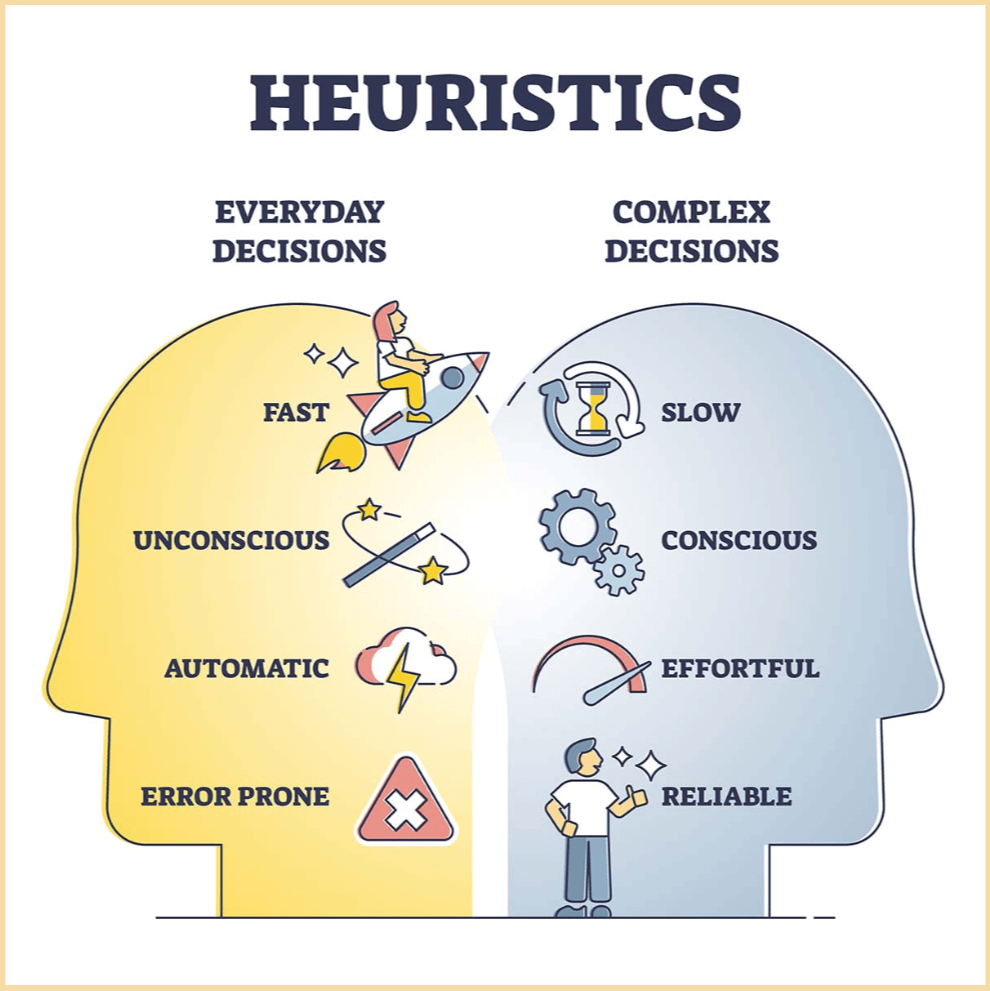
Source: Simply Psychology
Needless to say, this is not a rational approach, and it may lead to many misjudgments down the road. That’s why some researchers look at heuristics as causes of bad, hasty decisions. Let’s look at some classic academic experiments illustrating the heuristic.
Availability heuristic experiments
The K-words experiment
Tversky and the above-mentioned Kahneman, two grandfathers of behavioral economics, conducted their famous experiment in 1973. They asked participants to judge whether there are more words that begin with the letter K or more that have K as their third letter.
70% of the participants said that there are more words that begin with K. However, the opposite is true – on average, there are twice as many words with K as the third letter.
The cause of this prevalent mistake is not surprising. It’s much easier for people to think of words that begin with K than words that have K as the third letter. And as it is easier, they estimate it as more prevalent.
The more examples you need to retrieve, the less assertive you are
Norbert Schwarz and his colleagues decided to explore whether the ease with which participants retrieve examples of their behavior influences their self-image. Specifically, they asked participants to recall examples of themselves being assertive and then to judge how assertive they really were.
What was the catch here? One group of participants had to retrieve 6 examples, while the other one was asked to come up with 12 of them. If you had to guess, which group do you think evaluated themselves as more assertive?
Participants in this group thought that if it was so hard for them to recall the examples, perhaps they were not that assertive.
One might think that the more examples they came up with, the more assertive they felt, as they literally remembered being assertive more often, right? Wrong. Participants who had to recall 12 examples evaluated themselves as being less assertive than the other group
The request to retrieve 12 examples meant that each new example became more difficult to recall. Participants in this group thought that if it was so hard for them to recall the examples, perhaps they were not that assertive. On the other hand, the group of participants who had to recall just 6 of them found it relatively easy, which just boosted their self-image.
The easier it is to recall, the deadlier it is
Another classic study comes from Fischhoff, Slovic, and Lichtenstein. They presented participants with multiple pairs of possible causes of death and asked them to estimate which one was deadlier.
Here are some of the study highlights:
- 80% of participants stated that death following various accidents was more frequent than death caused by a stroke, even though in reality strokes cause twice as many deaths overall.
- Tornadoes were estimated to be deadlier compared to asthma. However, asthma causes 20x more casualties.
- Death by botulism was considered more frequent than death caused by a lightning strike, even though it is actually 52x less common
- Death following various accidents was considered 300x more likely than death from diabetes. The true ratio? 1:4 in favor of diabetes.
History of the availability heuristic
Prior to behavioral economics findings (the true dark ages, if you will), the dominant point of view of human decision-making was purely rational. It was believed that humans are rational beings and make decisions in a way that brings them maximum utility while drawing on as few resources as possible.
We should therefore be able to weigh all the facts and make the most reasonable decision. However, in the late 60s and early 70s, Kahneman and Tversky observed situations that were not in line with this robotic view of people. They summed it up in one of their most famous papers, called Judgment under Uncertainty: Heuristics and Biases.
In the article, the authors explored multiple heuristics such as availability, representativeness, or anchoring bias, along with the psychological background of these intuitive shortcuts.
Over the years, it turned out that these heuristics have widespread implications and describe our decision-making very well. Most importantly, the availability heuristic turned out to explain a good deal of how people assess risk, which had huge implications for their financial decisions.
One thing led to another and Kahneman was awarded the Nobel prize for economics in 2002. Unfortunately, Tversky had passed away six years earlier, so could not share the award.
How can we avoid the availability heuristic?
Even though heuristics serve us quite well most of the time, they can very easily lead us astray and cause us to make irrational decisions. How can we avoid that?
It’s tricky. System 1 heuristics have evolved over millions of years, so there is no easy way to get rid of them. But here’s a little help with fighting them.
Reflect upon what drives your decision
The first tip comes from Daniel Kahneman himself. In his book Thinking, Fast and Slow, he advises simply slowing down and reflecting. Instead of quick System 1 thinking, you should tap into your slower System 2 which allows you to think logically.
Ask yourself – what information do you base your decision on? Did you consider all the pros and cons, or simply go with your gut?
Red teaming
This one can help to avoid being biased as a team. The idea is simple – pick a person, or even more than one person from the team whose main role will be to challenge the ideas and suggest alternatives.
Such a devil’s advocate who constantly opposes the ideas of the majority will show weak points and may reduce the effect of the availability heuristic. Plus, others will be more willing to come up with their own ideas and disagree with the original suggestion.
Always look up statistics
Statistics are boring. It’s just numbers and no one likes numbers (except dark ages economists). But you should actively try to make them your main source of information.
Even though juicy stories that put a vivid picture in your head are way more appealing, they can also be the foundation of the availability heuristic.
Examples and case studies
Catastrophic events increase insurance take ups
Guess when people are most prone to taking out insurance? Correct – when it’s easy for them to recall the need for it.
Researchers found out that after natural disasters, related insurance rates spike in affected communities. For example, after Hurricane Katrina in 2006, flood insurance policies increased by 14.3%.
After some time passes and it’s a bit harder to recall the disaster and its consequences, insurance rates steadily decline back to normal.
Since it’s easier to recall the experience of a disaster that occurred recently, people are likely to overestimate the risk that it can happen again. On the other hand, since it is more difficult to recall a disaster that occurred in the past, people are likely to underestimate the risk of it happening again.
Impact of recent events on a workplace assessment
The availability heuristic is the main reason why workplace assessment should take place on more than just a yearly basis. Why? It’s simple.
If there’s only a yearly assessment, the most recent events will have more impact on the assessment.
If there’s only a yearly assessment, the most recent events will have more impact on the assessment.
For example, an employee might forget to deal with an important project management issue before leaving for vacation, resulting in a project falling behind. Even though the employee is reliable 99% of the time, this mistake could lead to a worse assessment if it happened right before it.
Standard Life increased customer satisfaction with a single question
The insurance company Standard Life asked experts from Cowry Consulting to redesign the script their customer support team was using when communicating with customers.
What really drew Cowry’s attention was the ending of the script. The ending is crucial and very formative when it comes to customer satisfaction. Why? Because of the peak-end rule. It says that as the ending of any process is easiest to recall, it has a major impact on the whole experience.
The standard ending for calls went something like this:
- “Now that we’ve dealt with your inquiry, is there anything else I can help you with today?”
Usually, the customer would say no.
- “Would you like to take part in our survey about the quality of service you received?”
The customer would say no to this too, finishing with a double negative.
When you end a call like this and later ask customers to rate how satisfied they were with the support, the first thing they will recall is the double negative. Not great.
Cowry suggested tweaking the first question. The new version sounded like this:
- “Have we covered everything you needed from us today?”
The answer? Yes! Customers were not just more likely to answer yes to a subsequent request to fill out the survey – they also felt better about the whole interaction in retrospect. Specifically, customer satisfaction increased by 13%.
How to use the availability heuristic in business
Ad repetition makes customers buy
Is there an ad that you really can’t stand anymore? Is it because you see it everywhere you go? Yep, those companies use the availability heuristic in practice.
The more often you see their ads, the more available it is in your memory.
To stay relevant, they need to stay on the top of your mind. Whenever you need something, let’s say toothpaste, companies fight to be the first one that comes to your mind. And they do it through repetition. The more often you see their ads, the more available it is in your memory.
If your product is the best in the industry but customers don’t think of it when they need it, then they won’t buy it. The availability heuristic allows you to stay relevant.
The last thing customers remember affects customer experience
Remember the peak-end rule mentioned above? The principle says that the ending of any process is easiest for us to recall, resulting in a huge impact on the experience as a whole.
Let’s imagine you go shopping. First, you take your shopping cart, then you go inside, search and compare products, and then, at the end, go through the check-out.
After you leave the shop, the checkout will be your “freshest” memory of the shopping process. If you had to wait in line for a long time, the negative emotion that entails is what will be at the top of your mind – and it will color the whole experience as quite a negative one.
Sometimes, we can’t avoid waiting. But luckily, there are multiple behavioral interventions that can make it more bearable so it won’t ruin the whole experience for your customers.
Stories are easier to remember
One of the easiest ways to make your ad stick with customers is to build a story around your product. Why is that? A good story puts a vivid image in your customer’s mind and is built around emotion.
That’s why a compelling story is remembered better, and for far longer, than learning through facts and figures.
Imagine selling fitness trackers. One way of doing that is through hard facts. You can show customers a table with all of the fitness features and monitoring sensors that make your tracker the top of the line. Boring!
This type of advertisement only appeals to the enthusiast, but even for those it won’t stick. The other way of doing it is through a story. Let’s take a look at Fitbit’s ad:
Source: YouTube
Molecular biologist John Medina talks about this phenomenon in his new book, Brain Rules: 12 Principles for Surviving and Thriving at Work, Home, and School:
“When the brain detects an emotionally charged event, the Amygdala releases dopamine into the system. Because dopamine greatly aids memory and information processing, you could say it creates a Post-it note that reads, ‘Remember this.’”
When the brain detects an emotionally charged event, the Amygdala releases dopamine into the system. Because dopamine greatly aids memory and information processing, you could say it creates a Post-it note that reads, ‘Remember this.
The little girl’s voice narrating the story is a strong tool all by itself, as it naturally targets our emotions. The story of her mother literally following her heart adds to it and makes it stick with us. And thus, the chance of customers picking Fitbit next time they look for a fitness tracker rises.
Summary
What is the availability heuristic?
It’s a mental shortcut that allows us to make quick and effortless judgments about the probability of a certain event.
Events that are dramatic (such as plane crashes), personal, or attract attention (like celebrity divorces) are easier to remember. That’s why we tend to overestimate how often they occur.
How can we avoid it?
- According to experts, it helps to slow down and reflect upon our judgment. What information did we use to make a decision? Did we consider all of the pros and cons?
- On a team level, it helps to actively pick a member of the team, whose main role is to constantly oppose the ideas of the majority. It will show weak points and may reduce the effect of the availability heuristic.
- Lastly, do your research first. Search for hard numbers and statistics. Juicy stories may stick in our minds easier, but they can also lead us astray.
How can you use it in business?
- Repetition, repetition, repetition. Try to stay on the top of customers’ minds by staying relevant. The more often you expose them to your product, the more likely they will be to recall it when the time comes to purchase.
- The last thing your customers do will be their freshest memory. Try to make the end of any process as pleasant as possible. That way, the memory of your service will evoke a positive emotion, which will impact overall customer satisfaction.
- Sell your product through a story. Hard facts are boring. On the other hand, stories trigger emotions and put vivid pictures in our heads. That’s why they are easier to remember than just numbers and figures.
